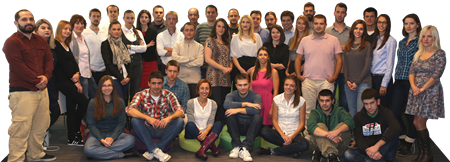Fall of Arkona or the Twilight of slavic Heathenism
| Cena: |
| Želi ovaj predmet: | 2 |
| Stanje: | Nekorišćen |
| Garancija: | Ne |
| Isporuka: | Pošta CC paket (Pošta) Post Express Lično preuzimanje |
| Plaćanje: | Tekući račun (pre slanja) Lično |
| Grad: |
Beograd-Rakovica, Beograd-Rakovica |
ISBN: Ostalo
Godina izdanja: 2019
Autor: Domaći
Jezik: Engleski
The fall of Arkona or the twilight of Slavic heathenism Rastko Kostić
Pad Arkone ili sumrak slovenskog paganizma
Autor: Rastko Kostić
Izdavač: ATOS-DK, Beograd
Godina izdanja: 2019
Broj strana: 420+24 ilustracije
Format: 21 x 14,5cm
Povez: Meki povez
Opis i stanje: Sadržaj na slici, ilustrovano. štampano u 300 primeraka, stanje odlično
PAD ARKONE ima za predmet propast i razaranje napredne i bogate oblasti ostrva Rugen/Rujan, koja se danas označava kao najsevernija tačka Nemačke, na Baltiku, blizu obala Danske i koja je, budući paganska i naseljena Zapadnim Slovenima (Vendima), nestala u krstaškoj vojni koju su u drugoj polovini XII veka preduzeli Danci pod vođstvom kralja Valdemara i biskupa Absalona i Saksonci pod vođstvom kralja Henrika. Tom prilikom razoreni su hramovi posvećeni bogovima Svetovidu, Rujevitu, Porevitu, Porenutu, Crnoglavu, Pizamaru, Babi, posle čega je slovensko stanovništvo nasilno hristijanizovano, a u potonjim decenijama i asimilovano ili – u većoj meri – fizički uništeno. Povest o ovim događajima prati se preko svedočanstava savremenika, Adama Bremenskog, Helmolda fon Bozaua, Saksa Gramatika i arapskog putopisca Al Masudija, kao i preko novih tumačenja i interpretacija koje na temu slovenske religije, pada Arkone i Rujna ili naučnih otkrića o vezama staroiranske, hindu religije i paganske staroslovenske religije uspostavljaju u naše dane istraživači različitih naučnih profila (Rafaele Petaconi, Pol Grinder Hansen, Ričard Stouni).
Fall of Arkona – deals with the demise and destruction of the rich and prosperous region of the Rugen island, the northern most point of today’s Germany, on the Baltic near Denmark, which, due to being pagan and inhabited by the western Slavs (the Wends), disappeared during the Crusades in the second half of the XII century, led by the Danes under king Valdemar and bishop Absalon, and the Saxons under king Henry. During that conquest, the temples dedicated to the gods Svetovid, Rugevit, Porevit, Porenut, Chernoglav, Pizamar, Baba, after which the Slavs have been forcefully Christianized. The
history of these events – as well as the life of the Slavs from the VII to the end of the XII century – is presented through the testimonies of chronicles and traveller-writers of Frankish, Germanic, Icelandic, Danish, Jewish and Arabic descent: Fredegar, Ibrahim ibn Yaqubthe Jew, Al Masudi, Widukind of Corvey, Thietman, Ebbo and Herbordus, Adam of Bremen, Helmold of Bosaut, Saxo Gramaticus and Olafur Thordarson, as well as through the new commentary and interpretation of Slavic religion and Old Slavic paganism made by the present-day researchers of various scientific backgrounds (Raffaele Pettazzoni, Paul Grinder Hansen, Richard Stoney and the author of this book). Fall of Arkona can in many ways be considered a unique work in the research of antiquity and some translation of the medieval chronicles and travelogues are appearing for the first time presented in this form, available now not only to scientific but a broad reading audience.
Tags:
Mitovi i legende
01.11.2023.
LIČNO PREUZIMANJE NEĆE BITI MOGUĆE NEKO VREME!!!
MOLIM VAS DA PROČITATE USLOVE PRODAJE I DA IH SE PRIDRŽAVATE:
I DON`T SEND BOOKS ABROAD!!! NE ŠALJEM KNJIGE NA KOSOVO!!!
Prodate predmete šaljem POSLE UPLATE na tekući račun u banci Intesa. NE ŠALJEM POUZEĆEM NI OBIČNOM TISKOVINOM I NE PRIMAM UPLATE POSTNETOM. Troškove slanja snosi kupac. IZMENU ADRESE prihvatam samo ako je primim PRE nego što registrujem uplatu.
xxxxxxxxxxxxxxxxxxxxxxxxxxxxxxxxxxxxxxxxxxxxxxxxxxxxxxxxxxxxxxxxxxxxxxxxxxxxxxxxxxxxxxxxxxxxxxxxxxxxxxxxxxxxxxxxxxxxxxxxxxxxxxxxxxxxxxxxxxxxxxxxxxxx
NE MOGU DA RAZNOSIM PREDMETE, NE MOGU DA SE NALAZIM SA KUPCIMA VAN ADRESE KOJU DOBIJETE POSLE KUPOVINE.
AKO TO NE PRIHVATATE, NEMOJTE KUPOVATI.
ZBOG PROMENE CARINSKIH PROPISA NE ŠALJEM KNJIGE U INOSTRANSTVO. POŠTO POŠTA NE PRIMA POŠILJKE ZA KOSOVO, NE ŠALJEM KNJIGE NA KOSOVO. UKOLIKO IPAK ŽELITE DA KUPITE KNJIGU IZ INOSTRANSTVA ILI KOSOVA, MORATE IMATI ADRESU ZA SLANJE U SRBIJI, VAN KOSOVA. AKO TO NEMATE, BIĆU PRINUĐENA DA VAM DAM NEGATIVNU OCENU DA BIH POVRATILA PROVIZIJU. AKO IMATE ADRESU ZA SLANJE U SRBIJI, KNJIGU MOŽETE UPLATITI I IZ INOSTRANSTVA, PREKO WESTERN UNIONA ILI MEĐUNARODNE POŠTANSKE UPUTNICE, GDE JE TO MOGUĆE.
Molim Vas za komunikaciju PREKO LIMUNDO - KUPINDO PORUKA, TELEFONOM samo IZUZETNO.
Molim Vas da obavezno potvrdite prijem pošiljke i upišete ocenu i da se pridržavate rokova koje je propisao Limundo - Kupindo.
Due to the changes in customs regulations, i no longer send books abroad.
Hvala
POGLEDAJTE MOJE AUKCIJE NA LIMUNDU:
http://www.limundo.com/Clan/arija1512/SpisakAukcija
Predmet: 76059101















